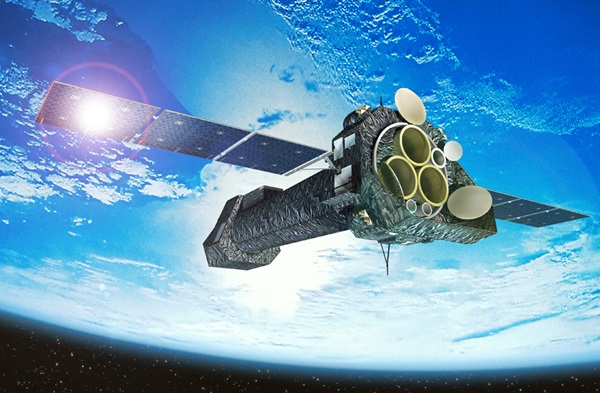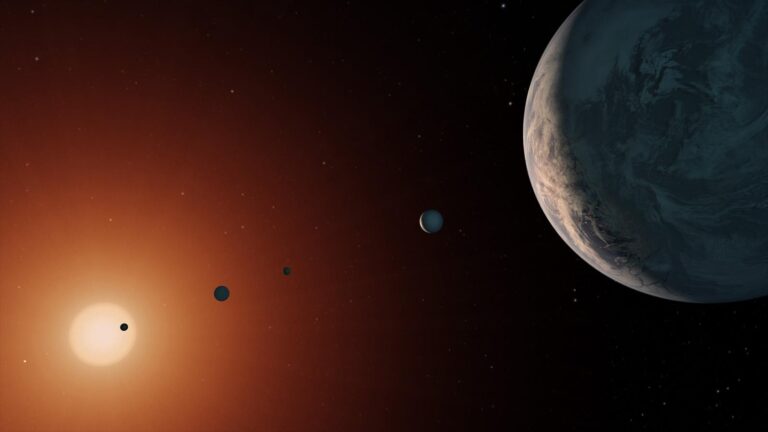Key Takeaways:
January 29, 2007
The orbiting XMM-Newton X-ray telescope has spied a new starburst galaxy, and it may help astronomers better understand these exotic objects. The spiral galaxy, NGC 6810, was not previously known to be a starburst galaxy. Intense star formation and supernova explosions in the starburst region drive a fountain of hot gas, or superwind, out of the galaxy.
The orbiting XMM-Newton X-ray telescope has spied a new starburst galaxy, and it may help astronomers better understand these exotic objects. The spiral galaxy, NGC 6810, was not previously known to be a starburst galaxy. Intense star formation and supernova explosions in the starburst region drive a fountain of hot gas, or superwind, out of the galaxy.
From Earth, the starburst galaxy NGC 6810 appears nearly edge-on and pointed vertically. This false-color image is a composite of visible starlight (blue), light from hot hydrogen gas (red), and X rays (green). The starburst region, site of intense star formation, appears white. The green areas coincide with the galactic superwind streaming from the starburst region.
ESA/David K. Strickland
What makes NGC 6810 so intriguing is that the starburst region is unusually spread out, explains David K. Strickland, codiscoverer and an associate research scientist in astrophysics at Johns Hopkins University.
Only three other starburst galaxies are known to have broad superwind sources. Typically, starburst activity occurs within a region of the galactic core about 6,000 light-years wide. NGC 6810’s base is more than 6 times wider, extending across nearly 70 percent of the entire galaxy’s diameter.
“We really don’t know why any of these galaxies have such extended starburst regions,” Strickland says. “But the more of them we discover, the more chance we have of seeing if these galaxies have some underlying reason in common for being different than the more common starburst galaxies.”
Strickland’s research paper about NGC 6810 will be published in the Monthly Notices of the Royal Astronomical Society.











